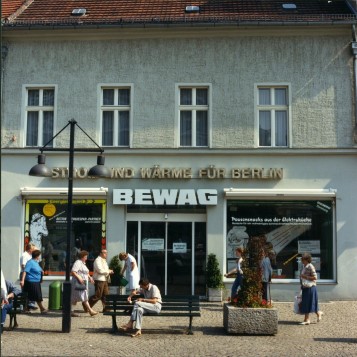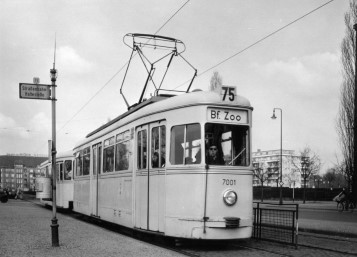Berlin electrified (Bewag)
The Germany-wide patent for the Edison light bulb sounded the starting shot. Emil Rathenau and Oskar von Miller thus laid the cornerstone for the success story of electricity in Berlin. Electricity caught on; from being a luxury, it became an essential local advantage.
Technical enthusiasts were greatly interested when the recent successful usages of electricity were demonstrated at the International Exposition of Electricity in Paris in 1881. Visitors included the then 43-year-old machinery manufacturer, Emil Rathenau, and the 26-year-old Bavarian government building trainee, Oskar von Miller.
Both of them saw in the incandescent light of the American, Thomas Alva Edison, a pioneering invention, and Rathenau acquired the patent for Germany. Only one year later, the first 60 light bulbs were glowing in a Berlin printing house. The power behind this – an engine with a capacity of 3 kilowatts. Other objects quickly followed suit, with the first electric street lighting soon added.
Birth of what became Bewag
As success became apparent, Rathenau founded Deutsche Edison-Gesellschaft für angewandte Elektricität, DEG for short, the forerunner of AEG. Now in collaboration with Oskar von Miller and by agreement with Siemens, he secured the public power supply for the two square kilometres of the city’s service district. On 8 May 1884, DEG founded the public limited company, Städtische Elektricitäts-Werke, with 3 million German Marks. From 15 August 1885, it had its own power plant at Markgrafenstraße 44 at Gendarmenmarkt.
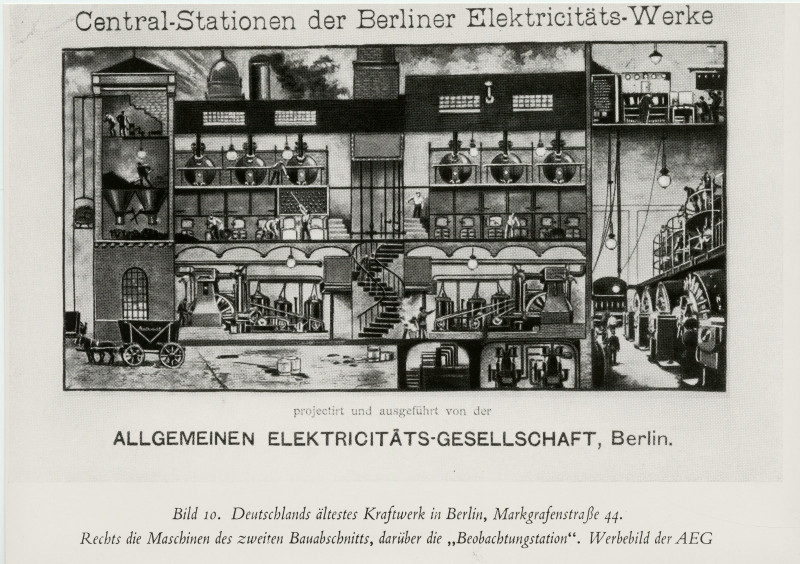
Germany’s oldest power plant in Berlin, Markgrafenstraße 44. The machines of the second construction phase one the right; the observation station above. | Year: - | Place: Berlin | Creator: Unknown | ID: VF000501
Its foundation represented the beginning of public power supply in Germany.
However, electricity was initially unaffordable: Only a few people could afford 250 Marks for a home service connection, up to 40 Marks meter rent annually and 80 pfennig for each kilowatt hour used. A worker’s salary was about 22.5 to 27.5 pfennig. No wonder, then, that Städtische Elektricitäts-Werke initially faced a crisis.
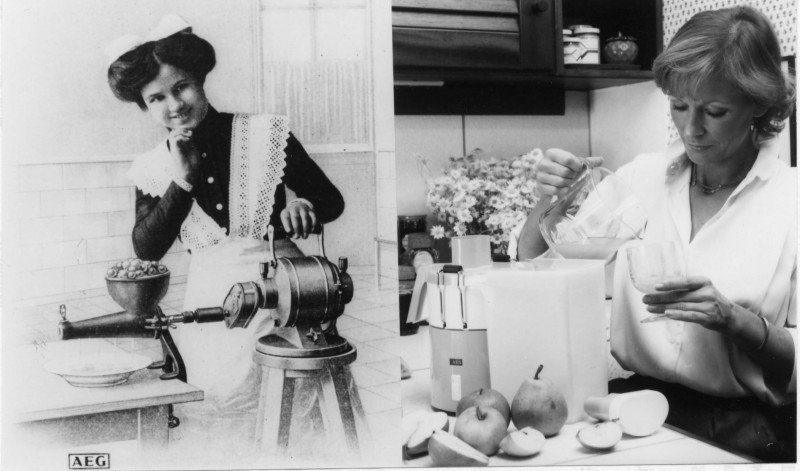
Advertisement for electrical equipment. Left: juicer from 1911, which worked with a household engine, invented by AEG. Right: a powerful juicer from 1983. The automatic residue throw-off enables time-saving processing of fruits. | Year: 1983 | ID: VF000506
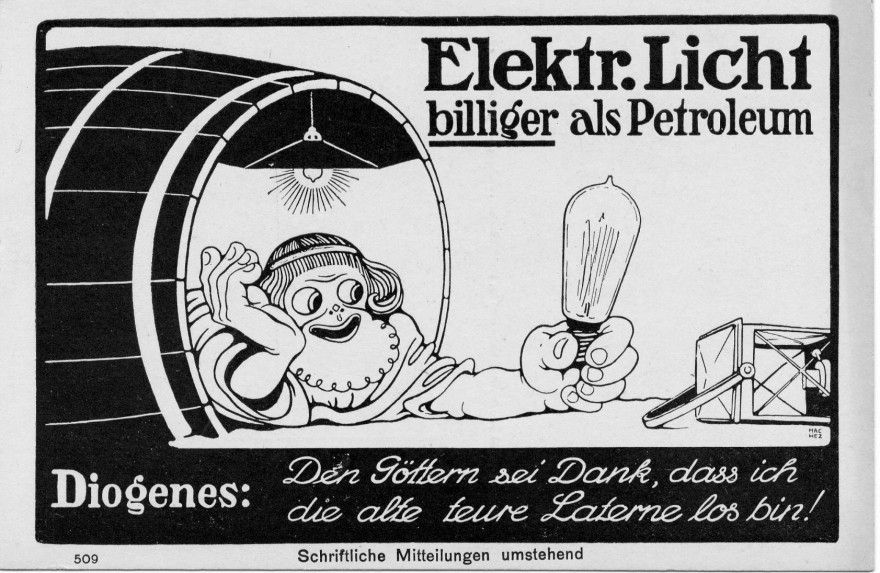
Advertisement for electrical equipment Year: 1976 | ID: VF000505
The company grows
In the long term, the success story was unstoppable. Small networks grew together. Larger steam engines and new power plants increased cost-effectiveness, resulting in lower electricity prices. Electric trams and the electrically operated overground and underground railways created further demand for electricity. From 1912, when Charlottenburg Town Hall got district heating, district heating supply also became part of the business.
Steam turbines replaced the less effective steam engines, light bulbs were technically refined, electric cars were produced and kitchens became electric. This caused electricity consumption to rise to new heights and the networks grew. The number of employees also grew. No employer in Berlin was more desirable. This was not least due to the company’s innovative social benefits. From 1900, employees were entitled to holidays, and from 1901 there was also a pension fund.
It seemed that nothing could halt the success of the young Elektrizitätswerke permanently: not the takeover of the company in 1915 by the City of Berlin, not the First World War, not inflation. In 1923, the company was given the name Berliner Städtische Elektrizitätswerke Aktien-Gesellschaft, Bewag for short.
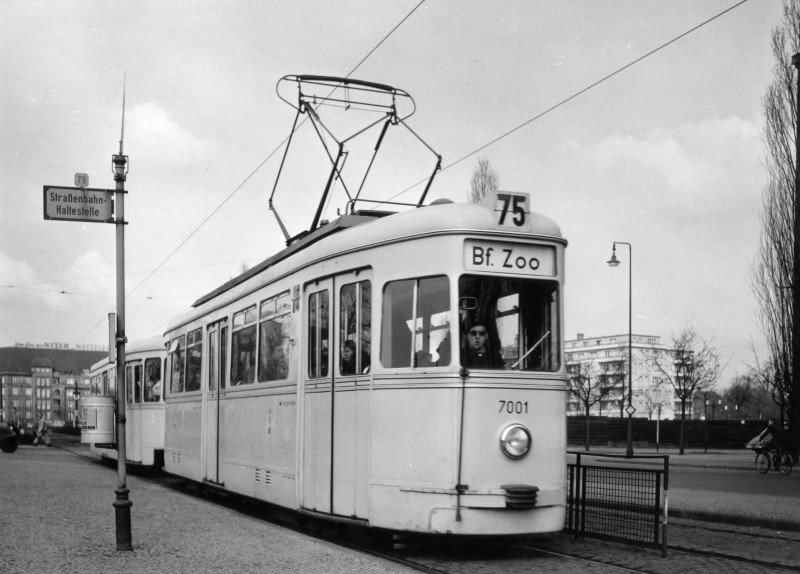
Electric tramway | Year: 1958 | Place: - | Creator: Unknown | ID: VF000509

